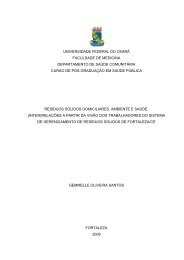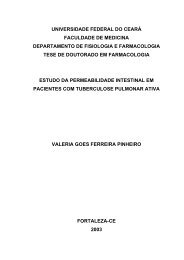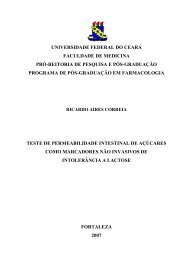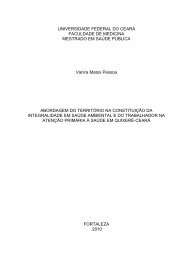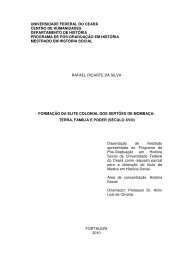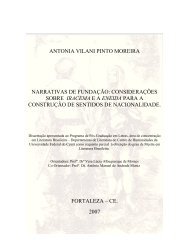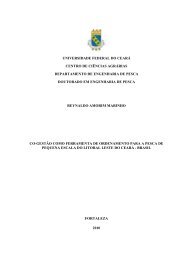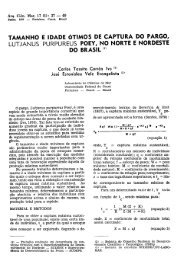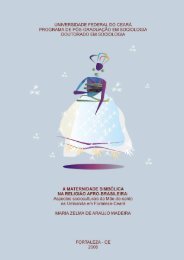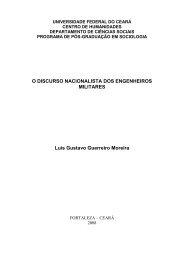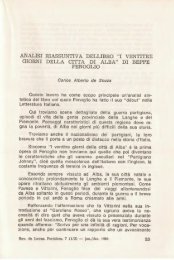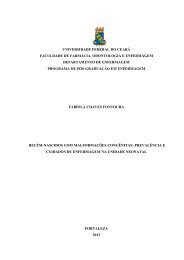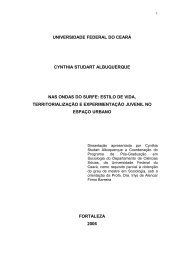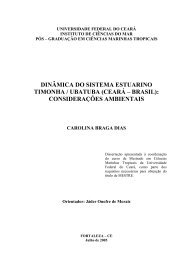Table 3. Population attributable fractions of modifiable factors associated with tungiasis. Floor of sand or clay inside the house Common resting place outside house without elevated costs. For example, cementing the floors of those houses with sandy or clay floor in the community would reduce prevalence of tungiasis by almost 75%. In addition, this measure will reduce transmission on the long run without any additional costs for the next years. Similar, confining pigs to pigpens and explaining to community members the location of breeding sites and areas of high transmission would reduce considerably the prevalence in the community. As a spin-off, the discussed measures References Attributable risk % exposed among cases PAF 0,89 82.5 73.7 0,86 76.2 65.5 Regular use of footwear 0,66 77.4 51.1 Presence of pigs on compound 0,94 40.1 37.9 doi:10.1371/journal.pntd.0000087.t003 1. Heukelbach J, de Oliveira FA, Hesse G, Feldmeier H (2001) Tungiasis: a neglected health problem of poor communities. Trop Med Int Health 6: 267–272. 2. Ehrenberg JP, Ault SK (2005) Neglected diseases of neglected populations: thinking to reshape the determinants of health in Latin America and the Caribbean. BMC Public Health 5: 119. 3. Molyneux DH, Hotez PJ, Fenwick A (2005) ‘‘Rapid-impact interventions’’: how a policy of integrated control for Africa’s neglected tropical diseases could benefit the poor. PLoS Med 2: e336. 4. Franck S, Feldmeier H, Heukelbach J (2003) Tungiasis: more than an exotic nuisance. Travel Medicine and Infectious Disease 1: 159–166. 5. Heukelbach J (2005) Tungiasis. Revista do Instituto de Medicina Tropical de São Paulo 47: 307–313. 6. Feldmeier H, Heukelbach J, Eisele M, Sousa AQ, Barbosa LM, Carvalho CB (2002) Bacterial superinfection in human tungiasis. Trop Med Int Health 7: 559–564. 7. Joseph JK, Bazile J, Mutter J, Shin S, Ruddle A, Ivers L, Lyon E, Farmer P (2006) Tungiasis in rural Haiti: a community-based response. Trans R Soc Trop Med Hyg 100: 970–974. 8. Feldmeier H, Eisele M, Saboia-Moura RC, Heukelbach J (2003) Severe tungiasis in underprivileged communities: case series from Brazil. Emerg Infect Dis 9: 949–955. 9. Obengui (1989) La tungose et le tétanos au C.H.U. de Brazzaville. Dakar Med 34: 44–48. 10. Tonge BL (1989) Tetanus from chigger flea sores. J Trop Pediatr 35: 94. 11. Hoeppli R (1963) Early references to the occurrence of Tunga penetrans in Tropical Africa. Acta Trop 20: 143–152. 12. Njeumi F, Nsangou C, Ndjend AG, Koga, Ostanello F, Pampiglione S (2002) Tunga penetrans au Cameroun. Revue Méd Vét 153: 176–180. 13. Ugbomoiko US, Ofoezie IE, Heukelbach J (2007) Tungiasis: High prevalence, parasite load and morbidity in a rural community in Lagos State, Nigeria. Int J Dermatol 46: 475–481. 14. Heukelbach J, Wilcke T, Harms G, Feldmeier H (2005) Seasonal variation of tungiasis in an endemic community. Am J Trop Med Hyg 72: 145–149. 15. González A, de Villalobos C, Ranalletta MA, Coscarón MC (2004) Aspectos adaptativos y biológicos de Tunga penetrans (Linné 1758). Epidemiología en comunidades aborígenes del norte argentino. Arch Argent Dermatol 54: 119–123. 16. Muehlen M, Feldmeier H, Wilcke T, Winter B, Heukelbach J (2006) Identifying risk factors for tungiasis and heavy infestation in a resource-poor community in Northeast Brazil. Trans R Soc Trop Med Hyg 100: 371–380. 17. Heukelbach J, Wilcke T, Eisele M, Feldmeier H (2002) Ectopic localization of tungiasis. Am J Trop Med Hyg 67: 214–216. probably reduce also the transmission of other parasitic diseases, such as neurocysticercosis, ancylostomiasis and strongyloidiasis. In conclusion, the presence of tungiasis in the community is associated to an important extent with a set of a few modifiable variables. Effective and sustainable intervention measures addressing these factors need to be implemented in the study area, and in other communities throughout West Africa, to reduce the burden of this neglected tropical disease. An integrated approach combining the control of animal reservoirs, housing and environmental factors, and health education is necessary. Intervention measures need to be designed by an interdisciplinary team together with the affected communities. Acknowledgments We thank the Baales and Ajido Erekiti communities for supporting the study and Mr. Durotimi Ashade and Mr. Ola Avhose for skillful assistance. LA received a PhD scholarship from Coordenação de Aperfeiçoamento de Pessoal de Nível Superior–CAPES (Brazil). Author Contributions Tungiasis in Nigeria Conceived and designed the experiments: JH UU IEO. Performed the experiments: UU. Analyzed the data: JH UU LA. Contributed reagents/ materials/analysis tools: JH. Wrote the paper: JH UU IEO LA. 18. Eisele M, Heukelbach J, van Marck E, Mehlhorn H, Meckes O, Franck S, Feldmeier H (2003) Investigations on the biology, epidemiology, pathology and control of Tunga penetrans in Brazil: I. Natural history of tungiasis in man. Parasitol Res 90: 87–99. 19. Heukelbach J, Mencke N, Feldmeier H (2002) Editorial: Cutaneous larva migrans and tungiasis: the challenge to control zoonotic ectoparasitoses associated with poverty. Trop Med Int Health 7: 907–910. 20. Heukelbach J, Costa AM, Wilcke T, Mencke N, Feldmeier H (2004) The animal reservoir of Tunga penetrans in severely affected communities of north-east Brazil. Med Vet Entomol 18: 329–335. 21. Carvalho RW, Almeida AB, Barbosa-Silva SC, Amorim M, Ribeiro PC, Serra- Freire NM (2003) The patterns of tungiasis in Araruama township, state of Rio de Janeiro, Brazil. Mem Inst Oswaldo Cruz 98: 31–36. 22. Rietschel W (1989) Beobachtungen zum Sandfloh (Tunga penetrans) bei Mensch und Hund in Französisch-Guayana. Tierärztliche Praxis 17: 189–193. 23. Cooper JE (1976) Tunga penetrans infestation in pigs. Veterinary Records 98: 472. 24. Cooper JE (1967) An outbreak of Tunga penetrans in a pig herd. Veterinary Records 80: 365–366. 25. Verhulst A (1976) Tunga penetrans (Sarcopsylla penetrans) as a cause of agalactia in sows in the Republic of Zaire. Veterinary Records 98: 384. 26. Pampiglione S, Trentini M, Gentili FM, Mendes JLX, Pampiglione C, Rivasi F (1998) Tunga penetrans (Insecta: Siphonaptera) in pigs in São Tomé (Equatorial Africa): Epidemiological, clinical, morphological and histopathological aspects. Revue Élev Méd vét Pays trop 51: 201–205. 27. Heukelbach J, Costa AM, Wilcke T, Mencke N, Feldmeier H (2004) The animal reservoir of Tunga penetrans in severely affected communities of north-east Brazil. Med Vet Entomol 18: 329–335. 28. Muehlen M, Heukelbach J, Wilcke T, Winter B, Mehlhorn H, Feldmeier H (2003) Investigations on the biology, epidemiology, pathology and control of Tunga penetrans in Brazil II. Prevalence, parasite load and topographic distribution of lesions in the population of a traditional fishing village. Parasitol Res 90: 449–455. 29. Wilcke T, Heukelbach J, Cesar Saboia MR, Regina SK-P, Feldmeier H (2002) High prevalence of tungiasis in a poor neighbourhood in Fortaleza, Northeast Brazil. Acta Trop 83: 255–258. 30. Chadee DD (1998) Tungiasis among five communities in south-western Trinidad, West Indies. Ann Trop Med Parasitol 92: 107–113. 31. Arene FO (1984) The prevalence of sand flea (Tunga penetrans) among primary and post-primary school pupils in Choba area of the Niger Delta. Public Health 98: 282–283. 32. Ade-Serrano MA, Ejezie GC (1981) Prevalence of tungiasis in Oto-Ijanikin village, Badagry, Lagos State, Nigeria. Ann Trop Med Parasitol 75: 471–472. PLoS Neglected Tropical Diseases | www.plosntds.org 7 2007 | Volume 1 | Issue 3 | e87
Original Article Epidemiology and clinical aspects of tungiasis (sand flea infestation) in Alagoas State, Brazil Jorg Heukelbach, 1,2 Anne Jackson, 3 Liana Ariza, 4 Cláudia Maria Lins Calheiros, 5 Valquíria de Lima Soares, 5 and Hermann Feldmeier 3 1 Department of Community Health, School of Medicine, Federal University of Ceará, Fortaleza, Brazil; 2 School of Public Health, Tropical Medicine and Rehabilitation Sciences, James Cook University, Townsville, Australia; 3 Institute for Microbiology and Hygiene, Campus Benjamin Franklin, Charité – University of Medicine, Berlin, Germany; 4 Post-Graduation Program in Medical Sciences, School of Medicine, Federal University of Ceará, Fortaleza, Brazil; 5 Department of Pathology, Universidade de Ciências da Saúde de Alagoas (UNCISAL), Maceió, Brazil. Abstract Background: Tungiasis (infestation with the sand flea Tunga penetrans) is common in resource-poor populations throughout Brazil. However, the epidemiological situation and the clinical aspects are not fully understood. Methodology: To describe the prevalence and severity of tungiasis, associated pathology, as well as the seasonal variation in rural northeast Brazil, we performed two cross-sectional surveys: one in the rainy season, another in the dry season. Individuals were examined for the presence of tungiasis, number of lesions, symptoms and signs. In the rainy season, 88.6% (1,015/1,146), and in the dry season 91.1% (990/1,087) of the respective target populations were examined. Results: The prevalence of tungiasis was 21.6% (95% confidence interval: 19.0-24.1) in the rainy season and 29.5% (26.6-32.3) in the dry season (p
- Page 1 and 2:
UNIVERSIDADE FEDERAL DO CEARÁ FACU
- Page 3 and 4:
LIANA DE MOURA ARIZA UM NOVO MÉTOD
- Page 5 and 6:
RESUMO Introdução: Existe pouco c
- Page 7 and 8:
LISTA DE FIGURAS Figura 1: Macho e
- Page 9 and 10:
LISTA DE TABELAS Tabela 1: Caracter
- Page 11 and 12:
SUMÁRIO RESUMO ...................
- Page 13 and 14:
1 - INTRODUÇÃO 1.1 - TUNGÍASE A
- Page 15 and 16:
Após a penetração na epiderme, a
- Page 17 and 18:
No fim do século XIX, a pulga caus
- Page 19 and 20:
ARIZA et al., 2007; HEUKELBACH et a
- Page 21 and 22:
Figure 6: Múltiplas lesões nas m
- Page 23 and 24:
inflamação grave observada após
- Page 25 and 26:
A incidência, prevalência e carga
- Page 27 and 28:
Figura 11: Planta dos pés de uma m
- Page 29 and 30:
1953; PAMPIGLIONE et al., 1998; SIL
- Page 31 and 32:
eivindicada como tratamento eficaz
- Page 33 and 34:
1.2 - MÉTODOS EPIDEMIOLOGICOS RÁP
- Page 35 and 36:
1.4 - HIPÓTESE A presença de pelo
- Page 37 and 38:
3 - MATERIAL E MÉTODOS O presente
- Page 39 and 40:
3.1.1 - Comunidades brasileiras O M
- Page 41 and 42:
Figura 15: Vila pesqueira de Balbin
- Page 43 and 44:
total em torno de 240.000 pessoas (
- Page 45 and 46:
Figura 20: Comunidade pesqueira de
- Page 47 and 48:
(d) presença de uma casca preta pl
- Page 49 and 50:
Tanto em Yovoyan como em Okunilage,
- Page 51 and 52:
o Prevalência grave verdadeira = [
- Page 53 and 54:
Toda pesquisa deve ser conduzida co
- Page 55 and 56:
Em torno de 60% da população era
- Page 57 and 58:
A presença de animais domésticos
- Page 59 and 60:
Em geral, a distribuição da preva
- Page 61 and 62:
Dos 142 indivíduos infestados nas
- Page 63 and 64:
4.1.4 - Sinais e sintomas associado
- Page 65 and 66:
4.2 - MÉTODO EPIDEMIOLÓGICO RÁPI
- Page 67 and 68:
Figura 27: Prevalência por grupos
- Page 69 and 70:
Tabela 13: Verdadeiras prevalência
- Page 71 and 72:
Figura 31: Gráfico de dispersão e
- Page 73 and 74:
Tabela 14: Coeficiente de determina
- Page 75 and 76:
Tabela 15: Prevalências da área p
- Page 77 and 78:
Tabela 16: Prevalências gerais e g
- Page 79 and 80:
Tais características identificadas
- Page 81 and 82:
cujo comportamento do uso de chinel
- Page 83 and 84:
As cargas parasitárias por indiví
- Page 85 and 86:
tungíase, a desproporcional da car
- Page 87 and 88:
pulgas em estágios iniciais, e sua
- Page 89 and 90:
comunidades. A presença destas, si
- Page 91 and 92: Com esta área definida, basta insp
- Page 93 and 94: comunitários prévias à coleta de
- Page 95 and 96: 6 - CONCLUSÕES Epidemiologia da tu
- Page 97 and 98: CALLEGARI-JACQUES, S. M. Bioestatis
- Page 99 and 100: GIBBS, S. Skin disease and socioeco
- Page 101 and 102: HEUKELBACH, J.; SAHEBALI, S.; VAN M
- Page 103 and 104: MACINTYRE, K. Rapid assessment and
- Page 105 and 106: REMME, J. H. The African Programme
- Page 107 and 108: WEERASOORIYA, M. V.; ISOGAI, Y.; IT
- Page 109 and 110: APENDICE 1 108
- Page 111 and 112: APENDICE 2 110
- Page 113 and 114: 112
- Page 115 and 116: APÊNDICE 4 114
- Page 117 and 118: 9.1 AUTORIZACAO DO BAALES DAS COMUN
- Page 120 and 121: Tropical Medicine and International
- Page 122 and 123: Tropical Medicine and International
- Page 124 and 125: Tropical Medicine and International
- Page 126 and 127: Tropical Medicine and International
- Page 128 and 129: Tropical Medicine and International
- Page 130 and 131: Table 1 Animals examined for tungia
- Page 132 and 133: Ariza, L cols pacientes com doença
- Page 134 and 135: Ariza, L cols de patologias clínic
- Page 136 and 137: Risk Factors for Tungiasis in Niger
- Page 138 and 139: Figure 1. Prevalence of tungiasis s
- Page 140 and 141: Table 1. Bivariate analysis of fact
- Page 144 and 145: Heukelbach et al - Tungiasis in Ala
- Page 146 and 147: Heukelbach et al - Tungiasis in Ala
- Page 148 and 149: Heukelbach et al - Tungiasis in Ala
- Page 150 and 151: Heukelbach et al - Tungiasis in Ala
- Page 152 and 153: 456 Mem Inst Oswaldo Cruz, Rio de J
- Page 154 and 155: 458 Mem Inst Oswaldo Cruz, Rio de J
- Page 156 and 157: 460 Mem Inst Oswaldo Cruz, Rio de J
- Page 158 and 159: BMC Infectious Diseases BioMed Cent
- Page 160 and 161: 345&6'.%/-0,(1&701%#1%1%*))+,%!-&&.
- Page 162 and 163: 345&6'.%/-0,(1&701%#1%1%*))+,%!-&&.
- Page 164 and 165: 345&6'.%/-0,(1&701%#1%1%*))+,%!-&&.
- Page 166 and 167: 345&6'.%/-0,(1&701%#1%1%*))+,%!-&&.
- Page 168 and 169: The epidemiology of scabies in an i
- Page 170 and 171: 438 Feldmeier et al lymph nodes wer
- Page 172 and 173: 440 Feldmeier et al JAM ACAD DERMAT
- Page 174 and 175: 442 Feldmeier et al Table III. Mult
- Page 176 and 177: Published by Maney Publishing (c) L
- Page 178 and 179: Published by Maney Publishing (c) L
- Page 180 and 181: Published by Maney Publishing (c) L
- Page 182 and 183: Published by Maney Publishing (c) L
- Page 184 and 185: Published by Maney Publishing (c) L
- Page 186 and 187: 345&6%-%+0'#+7&8%1%#+/9%*++,-%!./)
- Page 188 and 189: 345&6%-%+0'#+7&8%1%#+/9%*++,-%!./)
- Page 190 and 191: 345&6%-%+0'#+7&8%1%#+/9%*++,-%!./)
- Page 192 and 193:
345&6%-%+0'#+7&8%1%#+/9%*++,-%!./)



